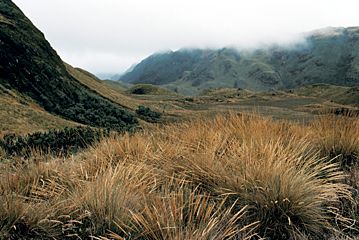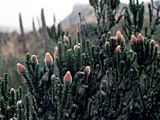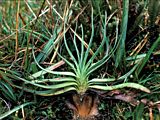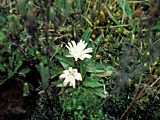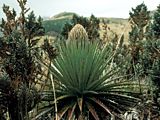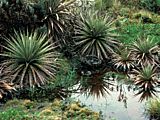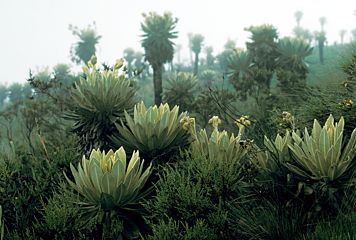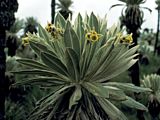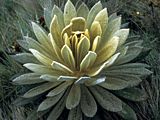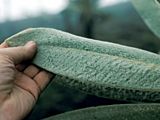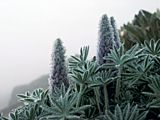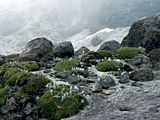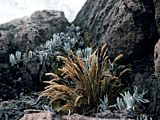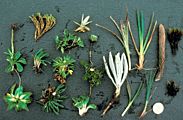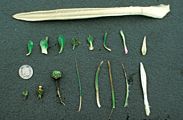Andes: Ecuador
At c. 4000 m elevation woodlands of Polylepis and Gynoxis would naturally give way to tall tussock grassland, shrubs and giant rosettes forming páramos vegetation. Quite often this transition is seen at lower elevation because of fire management. The Ecuadorian páramos region is a rather humid environment, only above 4500 m at some of the high volcanoes of central Ecuador can it get drier.
1 -
Tall tussock grassland at 4000 m near Paso de la Virgen (with
Poa,
Festuca,
Agrostis
and
Stipa
(all Poaceae) species) 3 hours' driving distance from Quito.

5 -
The
bromeliad
Puya sp.
(Bromeliaceae) forms giant rosettes and similarly gigantic inflorescences (4000 m).
16 -
A mix of cushion plants (
Azorella sp.
(Apiaceae),
Hypochoeris sp.
(Asteraceae),
Cerastium
(Caryphyllaceae)) and
Culcitium nivale
(Asteraceae) (Cayambe, 4600 m).
18 -
Culcitium nivale
(Asteraceae) (Cayambe, 4600 m). Compare the inflorescence with
Espeletia lutescens
in Venezuela.
19 -
Note the narrow range of diurnal temperatures in this almost permanently foggy elevation
between 4500 and 4700 m.
21 -
A selection of typical high Andean plant species at 4700 m elevation on Cayambe:
Cerastium sp.
(Caryophyllaceae),
Culcitium nivale
(Asteraceae),
Luzula sp.
(Juncaceae),
Hypochoeris sp.
(Asteraceae),
Azorella sp.
(Apiaceae, center), small rosettes of
Draba sp.
(Brassicaceae),
Aa sp.
(Orchidaceae, bottom center),
Hybertia sp.
(Lycopodiaceae, right).
